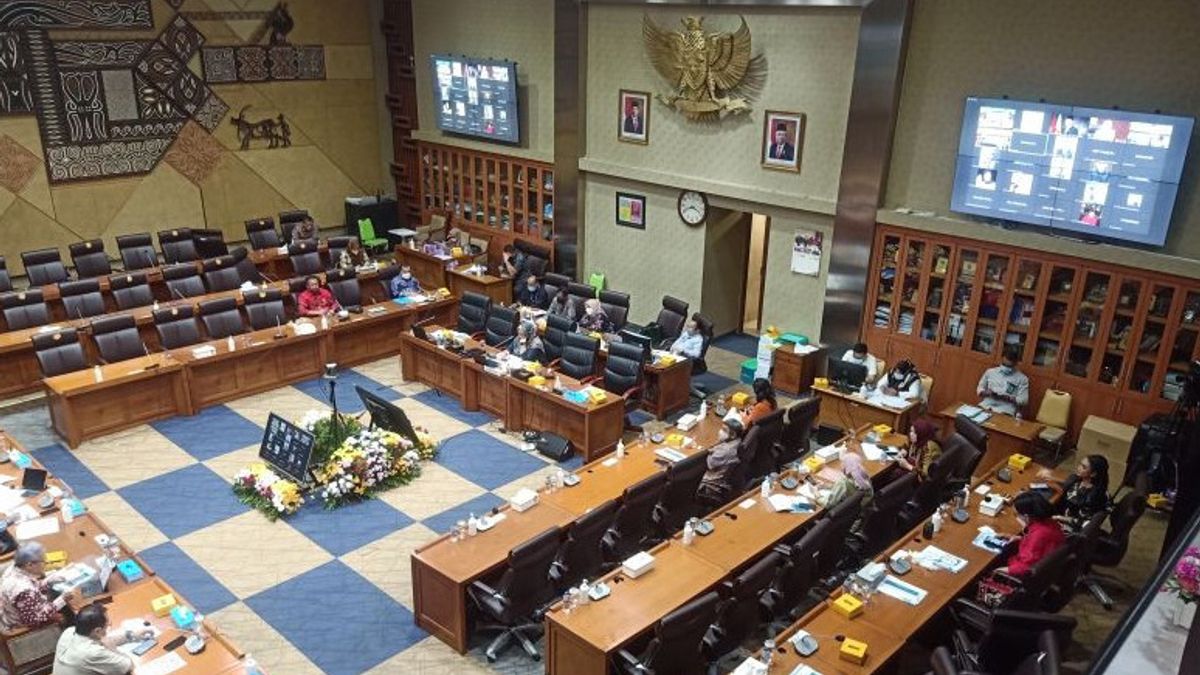JAKARTA - The Ministry of Health (Kemenkes) maintains the accuracy of calculating the number of mysterious acute hepatitis cases in children under the age of 16 using the New All Record (NAR) "big data" system affiliated with laboratory networks in Indonesia.
"Whether the number of 'under-counting' cases such as COVID-19 at the beginning, we have prepared with NAR examination," said Deputy Minister of Health Dante Saksono Harbuwono during a question and answer session during a Hearing Meeting (RDP) with Commission IX of the Indonesian House of Representatives in Jakarta, reported by Antara, Monday, May 23.
He said NAR during the COVID-19 pandemic had been used by the government to accommodate the results of laboratory examinations of patients who were confirmed positive for COVID-19 in Indonesia.
To date, there are 742 laboratories affiliated with the Ministry of Health and entering data into the NAR. The data of anyone who is tested for COVID-19 or vaccinated at that location will be entered into the NAR system.
The Deputy Minister of Health reported that so far there have been 14 suspected cases of acute hepatitis found until May 20, 2022 in Indonesia. A total of four cases of which were reported dead, while the rest are still under treatment and laboratory observation.
According to him, the cause of acute hepatitis is unknown. However, the characteristics found in patients in Indonesia are generally yellow skin, tea colored urine, fever and weakness.
He said the first three cases in Indonesia were found on April 27, 2022. All three were children under 16 years old and all of them had died. Reports of mysterious hepatitis cases in children through the NAR system then continued with the Whole Genome Sequencing (WGS) epidemiological investigation process. to detect certain specific patterns in mysterious acute hepatitis.
Currently, the Ministry of Health has a total of 38 WGS tools, consisting of 14 units of aid equipment and 24 units of equipment resulting from the procurement of goods from the Indonesian Ministry of Health. "A total of 24 units of WGS equipment from the global fund of 22 million US dollars, were fully used for the purchase of WGS equipment," he said.
According to him, the World Health Organization (WHO) has provided guidance regarding the definition of such cases, including discarted where hepatitis A, B, C, D and E viruses were detected or other etiologies were detected.
"We can show that there were 19 cases that ended up being discarted. They reported cases of jaundice in children, but because the cause was known, they ended up being discarted because of ordinary hepatitis, leukemia, because of drugs and so on," he said.
Another case definition is "pending classification" because it is waiting for laboratory results for hepatitis AE. SGOT/SGPT (inflammation of the liver) above 500 IU/L, patients under 16 years of age.
Furthermore, the definition of Epi-Linked where non-hepatitis AE virus, all ages, or close contact with probable cases since October 1, 2021.
The closest definition to mysterious acute hepatitis is probable, as evidenced by non-hepatitis AE laboratory results, SGOT/SGPT above 500 IU/L, age under 16 years and cases occurring since October 1, 2021.
"The definition of a confirmed case is currently being researched by health experts," said Dante Saksono Harbuwono.
The English, Chinese, Japanese, Arabic, and French versions are automatically generated by the AI. So there may still be inaccuracies in translating, please always see Indonesian as our main language. (system supported by DigitalSiber.id)












